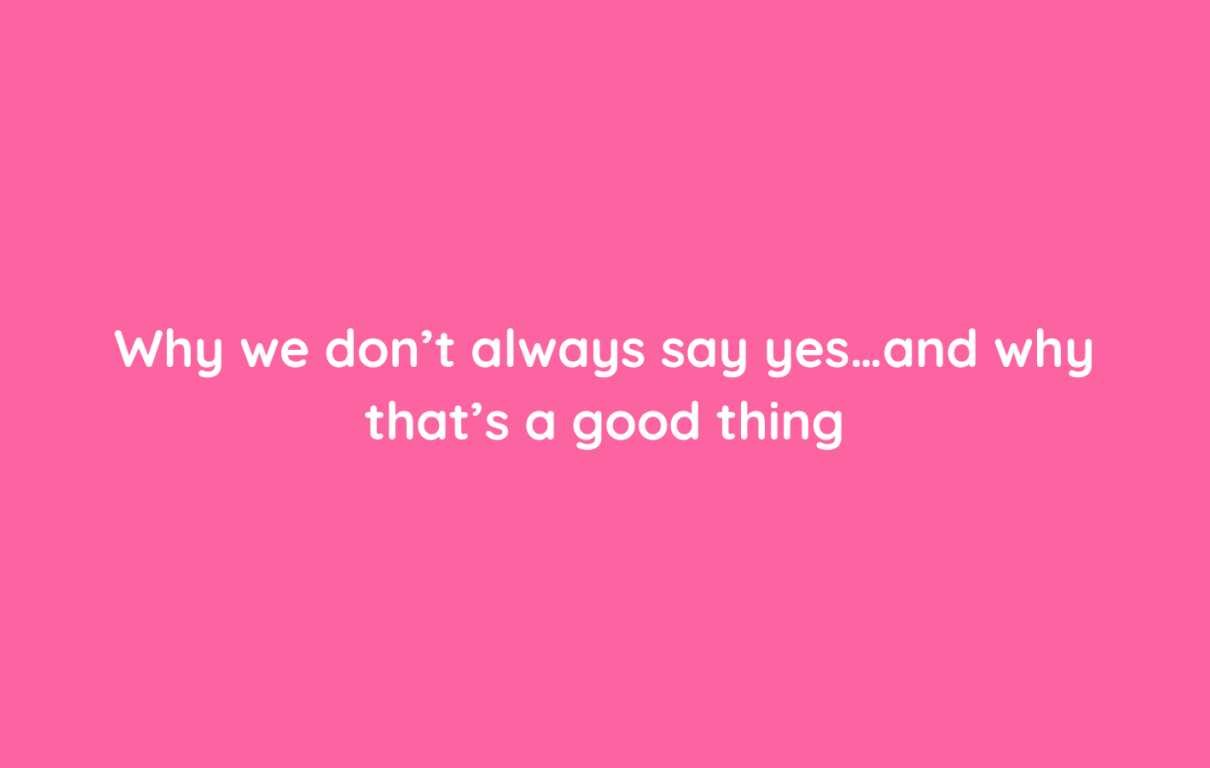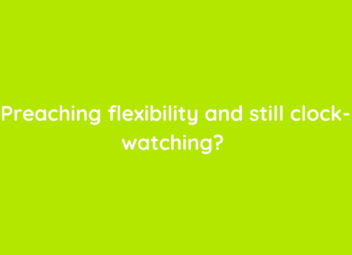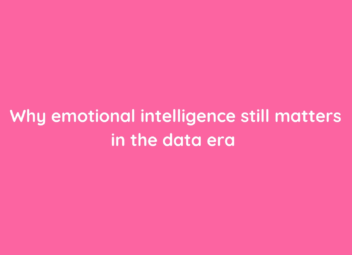
Why we don’t always say yes…and why that’s a good thing
If you know Clearbox, you know we’re a friendly bunch.
We bring snacks to meetings, remember your favourite Oasis song, and never judge the playlist in your office (mostly). We genuinely care about our clients and want them to succeed.
But sometimes, in order to achieve this, we say no.
Not because we’re difficult.
Not because we’re anarchists.
Not because we’ve got a secret ‘no’ quota to hit each month (definitely not a thing). We say no because we’re partners to our clients. Not rubber stampers.
After 12 years of creating impactful PR and communications campaigns that spanned continents and time zones, we’ve learned many things.
But one thing that stands out is this. The best client/agency relationships are built on trust, honesty, and the occasional gentle prod in a better or different direction.
It’s not our job to be a nodding dog. We’re trusted advisors.
Our clients are brilliant and they come to us with ideas all the time. First thing we do is listen. Carefully. We want to understand what’s behind the ask. Is it a bold campaign to shift perception? A moment of reactive comms? The board’s request? Or maybe it’s an idea that sounded great during a discussion in the pub at 11pm the night before (we’ve all been there)
Whatever the idea, we approach it with respect and curiosity. But then we do what we’re paid to do - we ask questions. We pressure test. We take it apart and rebuild it, if needed. And if we don’t believe it will land well with media, consumers, or the client’s audience, we’ll say so.
But here’s the important bit.
We NEVER say no without offering an alternative.
“No” on its own is banned round these parts.
However. “No, but we think this would work better and here’s how we’d do it...” is how we roll.
Saying no (politely) is part of our job
This next bit is hypothetical. Sort of.
Let’s say that we once had a brand ask us to help launch a new product with a flash mob.
In 2024.
If you watch our TikTok, you’ll know that we love a spontaneous dance routine as much as the next communications agency, but even back in 2012, this idea was a stretch. If this did happen (wink emoji), we’d have politely said no. But we wouldn’t have stopped there. We would have explained why it wouldn’t work - the potential backlash, the logistical mess, the fact that flash mobs aren’t a vibe anymore - and we’d propose a fresh, relevant idea that delivered the same energy in a way the audience would actually connect with.
The client would have listened. We would have launched. It would have worked.
OK, so that did happen. Guess what? The client thanked us.
Why? Because they didn’t want ‘yes’ for the sake of yes. They wanted impact. Results. Strategy. And, deep down, they wanted someone to tell them the truth.
Saying yes to everything can be a problem
We’ve seen what happens when agencies become yes machines. It can lead to campaigns that don’t land, budgets that evaporate, and photoshoots that end up with people holding large, ridiculous props.
At Clearbox, we protect our clients from that. We don’t do it to be awkward. We do it because we care.
We’re not hired to nod in agreement. We’re hired to make an impact and get results. Sometimes that means suggesting a change of course. Other times it means gut-checking an idea before it becomes the runaway train you can’t get a hold of. Occasionally, this means pressing pause altogether.
What saying no really means
No means we’re paying attention.
No means we’ve thought about your brand, your goals, your audience, and your reputation. It means we’ve weighed up the risks and the rewards. It means we care enough to challenge.
At this point, we should flag that we do we say yes a lot. Yes to big ideas, bold storytelling, yes to ice cream sprinkle mosaics that make the news all over the world and yes to beautifully messy brainstorms. But when we say no, it’s always no with a plan. No with a pivot. No with a solution.
That’s what being a communications partner looks like.
We’re all in this together (High School Musical style)
Our clients hire Clearbox because they want a team who’s in it with them. Not just during the glossy campaign highs, but during the tricky ‘how do we say this?’ moments too. When something hits the headlines unexpectedly. When a launch falls flat. Or when someone accidentally posts a personal meme from the brand’s TikTok account.
In those moments, you don’t need a yes-person. You need a pro.
You need someone who’s been in the room for the big decisions, has run global campaigns, and knows how to tell your story in a way that sticks. You need a partner who can say: “Let’s take a breath. Here’s what we do.”
That’s who we are.
So no, we won’t always say yes. Sometimes we’ll say no, and we’ll give you an alternative idea.
And you’ll always be glad we did.


